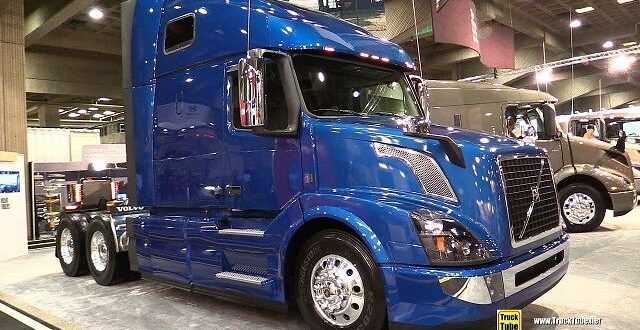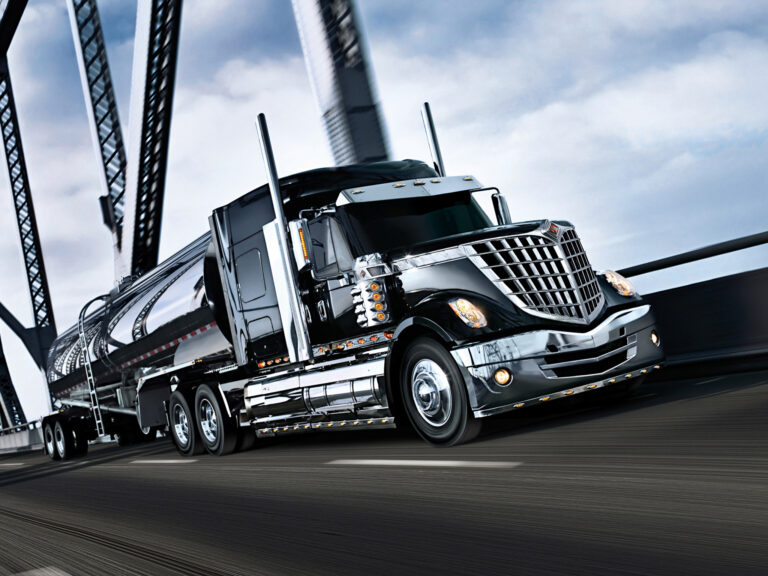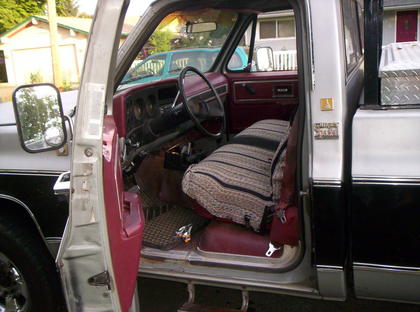How Many Yards Is A Dump Truck: A Comprehensive Guide to Capacity and Beyond
How Many Yards Is A Dump Truck: A Comprehensive Guide to Capacity and Beyond cars.truckstrend.com
When planning any construction, landscaping, or demolition project that involves moving bulk materials, one of the most fundamental questions you’ll face is: "How many yards is a dump truck?" This seemingly simple query unlocks a complex but crucial understanding of a dump truck’s capabilities, directly impacting your project’s efficiency, cost, and legal compliance.
In the context of dump trucks, "yards" almost universally refers to cubic yards – a measurement of volume. A cubic yard is a cube measuring three feet by three feet by three feet (3’x3’x3′), equivalent to 27 cubic feet. Understanding this capacity is vital for accurately estimating material needs, scheduling deliveries, and avoiding costly errors like under-ordering, over-ordering, or, critically, overloading a truck. This comprehensive guide will delve into the various factors that determine a dump truck’s capacity, common truck types, the interplay of volume and weight, and practical advice for making informed decisions.
How Many Yards Is A Dump Truck: A Comprehensive Guide to Capacity and Beyond
Understanding Cubic Yards and Dump Truck Capacity
At its core, a dump truck’s "yard" capacity indicates the maximum volume of loose material its bed can hold. This volume is a primary consideration for materials like:
- Dirt and topsoil
- Gravel and crushed stone
- Sand
- Mulch and wood chips
- Asphalt and concrete rubble
- Demolition debris
While the physical dimensions of a truck’s bed dictate its maximum volumetric capacity, several other factors influence how much material it can actually and safely transport in real-world scenarios:
- Truck Size and Type: Different classes of dump trucks are designed for varying scales of work, from small residential jobs to massive commercial developments. Each type has a characteristic range of cubic yard capacity.
- Material Density: This is perhaps the most critical factor often overlooked. A cubic yard of lightweight mulch weighs vastly less than a cubic yard of dense gravel. While a truck might have the volume capacity for 20 cubic yards, it may not have the weight capacity for 20 cubic yards of a heavy material.
- Legal Weight Limits (GVWR and Axle Limits): Every state and municipality has strict regulations on the maximum weight a truck can carry on public roads. This includes the Gross Vehicle Weight Rating (GVWR – the total weight of the truck and its load) and individual axle weight limits. Exceeding these limits leads to hefty fines, potential truck damage, and significant safety hazards.
- Bed Design: The specific design of the truck’s bed, including whether it has high sides, sideboards, or a particular shape, can slightly alter its practical cubic yard capacity.
Common Dump Truck Types and Their Capacities
Dump trucks come in a variety of configurations, each suited for different tasks and carrying different capacities. Here’s a breakdown of the most common types and their typical cubic yard ranges:
-
Standard/Single Axle Dump Truck: These are the smallest and most maneuverable dump trucks, often seen doing lighter work or in residential areas where space is limited.
- Typical Cubic Yard Capacity: 5 – 10 cubic yards
- Best For: Small landscaping projects, residential debris removal, delivering smaller quantities of soil or mulch.
-
Tandem Axle Dump Truck: By far the most common type of dump truck, the tandem axle features two rear axles, allowing it to carry significantly more weight and volume than a single-axle truck.
- Typical Cubic Yard Capacity: 10 – 18 cubic yards
- Best For: Medium to large construction projects, hauling aggregates, excavation spoils, and general material transport. This is often the default "dump truck" people envision.
-
Tri-Axle Dump Truck: Adding a third rear axle further increases the truck’s weight-bearing capacity, making it suitable for heavier loads and larger projects.
- Typical Cubic Yard Capacity: 15 – 22 cubic yards
- Best For: Large-scale commercial construction, road building, and transporting heavy materials like large quantities of gravel, asphalt, or concrete.
-
Quad-Axle / Quint-Axle (Super Dump): These heavy-duty trucks feature four or five rear axles, sometimes with a liftable "pusher" or "tag" axle, allowing them to legally carry extremely heavy loads on public roads.
- Typical Cubic Yard Capacity: 20 – 30+ cubic yards
- Best For: Major infrastructure projects, large quarries, and situations where maximum payload per trip is critical to efficiency.
-
Transfer Dump Truck: This system consists of a standard dump truck that pulls a separate trailer, also equipped with a dump body. The trailer’s load can be "transferred" into the main truck body, allowing for two loads to be hauled simultaneously by one driver.
- Typical Cubic Yard Capacity: 25 – 35+ cubic yards (combined)
- Best For: High-volume material transport over longer distances, reducing the number of trips.
-
Articulated Dump Truck (ADT): Unlike the on-road rigid frame dump trucks, ADTs are designed for off-road, rugged terrain. They have a pivot point between the cab and the dump body, offering superior maneuverability on uneven surfaces.
- Typical Cubic Yard Capacity: 25 – 40+ cubic yards (often also rated in tons)
- Best For: Mines, large-scale earthmoving, logging, and construction sites with challenging ground conditions.
-
Side Dump Truck: Instead of lifting the bed to dump from the rear, these trucks tilt the entire bed to the side. They are useful for spreading material linearly or in areas with overhead obstructions.
- Typical Cubic Yard Capacity: 18 – 25 cubic yards
- Best For: Road construction, windrowing materials, and projects where rear dumping is impractical.
Factors Beyond Cubic Yards: Weight Limits and Material Density
While cubic yards define the volume a truck can hold, the real-world limiting factor for many materials is weight. A truck will almost always "cube out" (fill its volume capacity) before it "weighs out" (reaches its weight limit) with lighter materials like mulch. However, with denser materials like sand, gravel, or concrete, a truck will often "weigh out" before it "cubes out."
Understanding Material Density:
- Topsoil (loose): ~2,000-2,400 lbs per cubic yard (1-1.2 tons)
- Gravel/Crushed Stone (dry): ~2,800-3,000 lbs per cubic yard (1.4-1.5 tons)
- Sand (dry): ~2,700-3,100 lbs per cubic yard (1.35-1.55 tons)
- Wet materials: Water adds significant weight. Wet sand or gravel can be 10-20% heavier than dry.
- Mulch/Wood Chips: ~400-800 lbs per cubic yard (0.2-0.4 tons)
Practical Impact:
Consider a tandem axle dump truck with a volumetric capacity of 16 cubic yards and a legal weight capacity of 20 tons (40,000 lbs) for its payload.
- Hauling Mulch: At 500 lbs/cubic yard, it could theoretically carry 40,000 lbs / 500 lbs/yard = 80 cubic yards. However, its bed only holds 16 cubic yards. In this case, it will cube out long before it weighs out. You’d pay for the volume it can hold.
- Hauling Gravel: At 3,000 lbs/cubic yard, 16 cubic yards would weigh 16 * 3,000 = 48,000 lbs (24 tons). This exceeds the truck’s 20-ton payload limit. In this scenario, the truck would weigh out at approximately 20 tons / 1.5 tons/yard = 13.3 cubic yards, even though its bed could physically hold 16 cubic yards.
This distinction is crucial for accurate planning and preventing costly fines or safety hazards. Always communicate the type of material you need transported when inquiring about dump truck services.
Choosing the Right Dump Truck for Your Project
Selecting the correct dump truck involves balancing several considerations:
- Project Scale: For small DIY projects, a single-axle or smaller tandem truck might suffice. Large construction sites will necessitate tri-axles, super dumps, or articulated trucks.
- Material Type: As discussed, lighter materials might allow you to fill a truck to its volumetric capacity, while heavier materials will limit you to its weight capacity.
- Site Access: Can a large tri-axle truck maneuver safely into your job site, or do tight turns and narrow entrances necessitate a smaller, more agile vehicle?
- Budget: While larger trucks have higher hourly or per-load rates, they reduce the number of trips needed, potentially saving overall time and money. Smaller trucks are cheaper per hour but may require more trips for large quantities.
- Regulatory Compliance: Always ensure the truck and its operator adhere to all local and state weight restrictions. Ignorance is no defense against fines.
Practical Advice and Actionable Insights:
- Always specify the material type: When requesting a quote or service, don’t just ask for "10 yards." Ask for "10 cubic yards of gravel" or "10 cubic yards of topsoil." This allows the provider to send the appropriate truck and calculate the load accurately.
- Understand the "weight vs. volume" trade-off: Be aware that a truck’s stated cubic yard capacity is its maximum volume, but its actual carrying capacity for heavy materials will be limited by its weight rating.
- Calculate your needs: Measure your project area to determine the exact cubic yards of material required. Online calculators are readily available for common shapes (e.g., length x width x depth / 27 for cubic yards).
- Factor in accessibility: If your site has narrow driveways, low overhead wires, or soft ground, discuss this with the trucking company. They may recommend a smaller truck or special equipment.
- Consider potential overages: It’s often better to slightly over-order materials than to run short and incur additional delivery fees for a small top-up load.
- Never overload: Overloading a dump truck is extremely dangerous, illegal, and can cause significant damage to the truck, roads, and potentially lead to severe accidents.
Dump Truck Capacity & Estimated Costs
The following table provides general estimates for dump truck capacities and associated costs. Please remember that prices are highly variable based on location, fuel costs, material type, project duration, and the specific trucking company. Always obtain detailed quotes from local providers.
| Truck Type | Est. Cubic Yard Capacity | Est. Material Weight Capacity (Tons) | Typical Hourly Rental Cost (USD) | Typical Per Load Cost (USD) |
|---|---|---|---|---|
| Single Axle | 5 – 10 cu yds | 5 – 10 tons | $75 – $125 | $100 – $200 |
| Tandem Axle | 10 – 18 cu yds | 10 – 20 tons | $100 – $150 | $150 – $300 |
| Tri-Axle | 15 – 22 cu yds | 15 – 25 tons | $120 – $180 | $200 – $400 |
| Super Dump (Quad/Quintuple) | 20 – 30+ cu yds | 25 – 35+ tons | $150 – $250 | $300 – $600+ |
| Transfer Dump | 25 – 35+ cu yds | 25 – 35+ tons | $150 – $250 | $300 – $600+ |
| Articulated Dump | 25 – 40+ cu yds | 30 – 60+ tons | $180 – $300+ | N/A (usually project-based) |
Please note: These figures are approximate and can vary significantly based on location, material, fuel costs, company, and specific project requirements. Always obtain detailed quotes from local providers.
Frequently Asked Questions (FAQ)
Q: Is "yard" always cubic yards when referring to dump trucks?
A: Yes, in virtually all contexts related to dump truck capacity for bulk materials, "yard" refers to a cubic yard.
Q: Can a dump truck carry more than its stated cubic yard capacity?
A: Physically, it might be able to hold more if the material is very light or if the bed is heaped significantly. However, legally and safely, it cannot carry more than its maximum permissible weight limit (GVWR and axle limits), which often overrides its volumetric capacity, especially for heavy materials. Overloading is dangerous and illegal.
Q: How do I calculate how many loads I need for my project?
A: First, determine the total cubic yards of material you need. Then, divide that total by the effective cubic yard capacity of the dump truck you plan to use (considering both volume and weight limits for your specific material). For example, if you need 50 cubic yards of gravel and a tandem truck can only safely carry 12 cubic yards of gravel per load due to weight, you’d need 50 / 12 = approximately 5 loads.
Q: What’s the difference between cubic yards and tons for dump trucks?
A: Cubic yards measure volume (how much space the material takes up), while tons measure weight. For dump trucks, both are critical. Lightweight materials (like mulch) are limited by volume (cubic yards), while heavy materials (like gravel) are often limited by weight (tons).
Q: Are all dump trucks the same size?
A: No, dump trucks come in many sizes and configurations, from small single-axle trucks to massive articulated off-road vehicles. Their size directly impacts their cubic yard capacity and the weight they can legally and safely carry.
Conclusion
Understanding "how many yards is a dump truck" goes far beyond a simple number. It encompasses the interplay of volumetric capacity, material density, legal weight limits, and the specific type of truck. By grasping these fundamental concepts, you can make informed decisions that optimize your project’s material transport, control costs, ensure safety, and comply with regulations. Whether you’re a homeowner tackling a landscaping project or a construction manager overseeing a large build, a clear understanding of dump truck capacities is an indispensable tool for efficient and successful operations.





